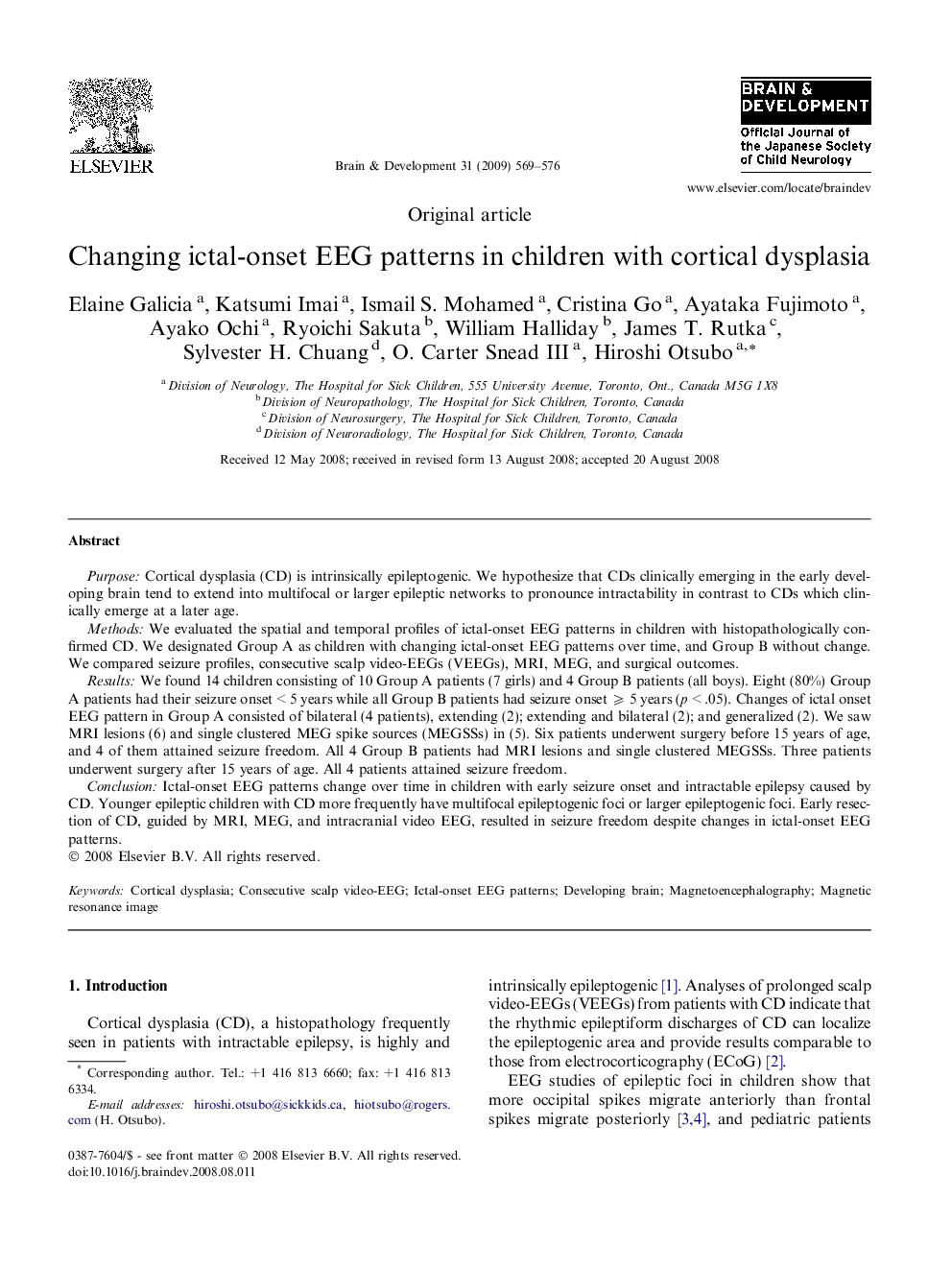| Article ID | Journal | Published Year | Pages | File Type |
|---|---|---|---|---|
| 3038025 | Brain and Development | 2009 | 8 Pages |
PurposeCortical dysplasia (CD) is intrinsically epileptogenic. We hypothesize that CDs clinically emerging in the early developing brain tend to extend into multifocal or larger epileptic networks to pronounce intractability in contrast to CDs which clinically emerge at a later age.MethodsWe evaluated the spatial and temporal profiles of ictal-onset EEG patterns in children with histopathologically confirmed CD. We designated Group A as children with changing ictal-onset EEG patterns over time, and Group B without change. We compared seizure profiles, consecutive scalp video-EEGs (VEEGs), MRI, MEG, and surgical outcomes.ResultsWe found 14 children consisting of 10 Group A patients (7 girls) and 4 Group B patients (all boys). Eight (80%) Group A patients had their seizure onset < 5 years while all Group B patients had seizure onset ⩾ 5 years (p < .05). Changes of ictal onset EEG pattern in Group A consisted of bilateral (4 patients), extending (2); extending and bilateral (2); and generalized (2). We saw MRI lesions (6) and single clustered MEG spike sources (MEGSSs) in (5). Six patients underwent surgery before 15 years of age, and 4 of them attained seizure freedom. All 4 Group B patients had MRI lesions and single clustered MEGSSs. Three patients underwent surgery after 15 years of age. All 4 patients attained seizure freedom.ConclusionIctal-onset EEG patterns change over time in children with early seizure onset and intractable epilepsy caused by CD. Younger epileptic children with CD more frequently have multifocal epileptogenic foci or larger epileptogenic foci. Early resection of CD, guided by MRI, MEG, and intracranial video EEG, resulted in seizure freedom despite changes in ictal-onset EEG patterns.
